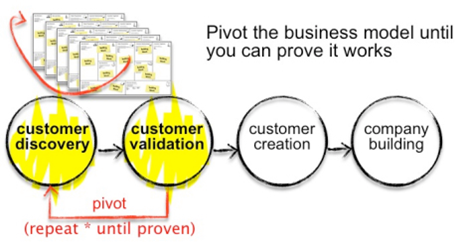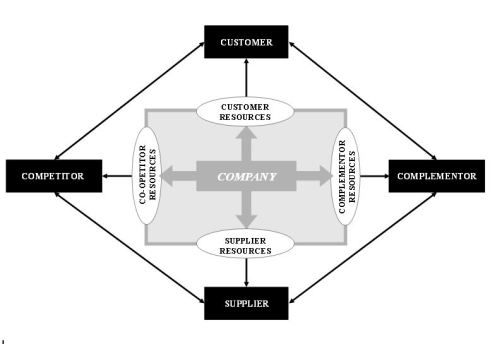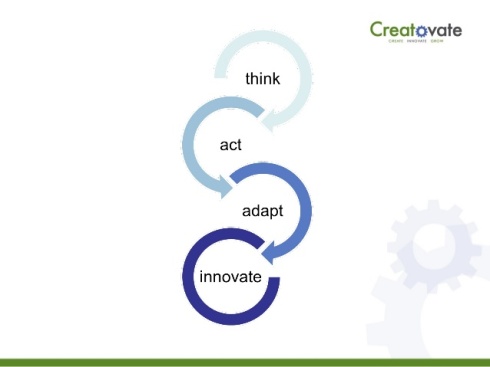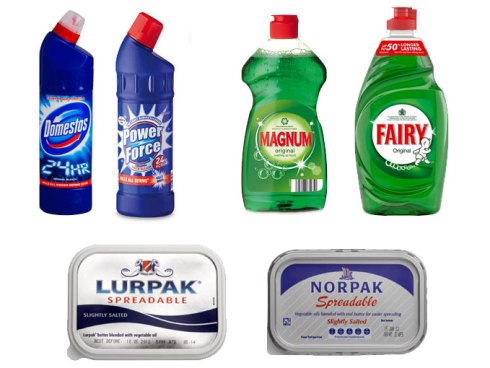
Author: Dermott Dowling @Creatovate (2016).
Now more than ever we need to think past new products and improved product performance when we think of truly ‘#disruptive innovation’ that upsets incumbents in industries and creates sustainable competitive advantage for the disruptive innovators.
How many types of innovation can you think of? Have a go…write them down below as many as you can…can you see 10 or more distinct types of innovation examples?
- ……………
- ……………
- ……………..
- …………..
- …………..
- …………..
- ………….
- ………….
- …………….
- ……………..
Often, when we think about innovation all we think about is new products or improving existing product performance. This is very important, but one of the increasing challenges we face in a hyper-competitive fast-pace modern business world is the ability of low-cost fast-to-market competitors copying your innovation and reducing your margin on new products and improved product performance as quickly as you can bring these new products to market.
Take this comment from a former Australian PepsiCo® R&D manager – is it symptomatic of your industry as well?
“We knew Smith’s Popped Chips was going to be a success as Popped Chips was doing very well in the US and our early prototypes tested very well with consumers and retailers. What we didn’t expect was 3 other competitor brands and a private label retail brand launching at exactly the same time as we did!” PepsiCo® R&D & Innovation Manager, AIFST Innovation Reloaded Conference, Sydney, 2014.
The following extracts from articles and sources follow to help you think of multiple types of innovation so the next time you come up with a great idea for your business you might also think of some additional types of innovation to build on that great idea and ask your peers and customers and networks inside and outside your business for their ideas to help build a truly ‘disruptive innovation’.
Whatever your company hopes to do in terms of innovation, we suggest that the answer involves innovating within the following 10 distinct innovation areas, classified by the Doblin model:
- profit model,
- company network,
- company structure,
- company process,
- product,
- product performance,
- customer service,
- customer channel,
- innovative branding and
- customer engagement.
Let’s take a look at each of the 10 distinct types of innovation and an example of a company using that type of innovation as a key distinct advantage in their industry. Note that you need to aim for at least 3 and ideally 5 or more different types of innovation to create a truly ‘disruptive innovation’ that can be sustained for a decent period of time in a highly competitive industry (Keeley, 2015).

How you make money | Innovative profit models find fresh ways to convert your offerings and other sources of value into cash. Great ones reflect a deep understanding of what customers and users actually cherish and where new revenue or pricing opportunities might lie. Innovative profit models often challenge an industry’s tired old assumptions about what to offer, what to charge or how to collect revenues. This is a big part of their power: in most industries the dominant profit model often goes unquestioned for decades. (Doblin, Deloitte Development LLC.)
Examples of companies that successfully altered profit models in established industries to include:
- Gillette – the ‘razor and blades’ profit model has been celebrated for years and adapted to countless other industries from ‘printers & cartridges’ to ‘coffee makers & capsules’
- Dell – reengineered the go-to-market delivery system when it first launched selling direct causing large share loss for competitors with traditional reseller business models.

How you connect with others to create value | In today’s hyper-commercial world, no company can or should do everything alone. Network innovations provide a way for firms to take advantage of other companies’ processes, technologies, offerings, channels and brands — pretty much any and every component of a business. These innovations mean a firm can capitalize on its own strengths while harnessing the capabilities and assets of others. Network innovations also help executives to share risk in developing new offers and ventures. These collaborations can be brief or enduring, and they can be formed between close allies or even staunch competitors. (Doblin, Deloitte Development LLC.)
Examples of companies that have successfully created value through network include:
- Target (US) – work with product designers and world-renowned fashion designers to create items only available at Target, other retailers to create Pop-Up stores for limited times only.
- P&G – Connect + Develop – P&G connects with external innovators and companies who submit innovations to P&G’s Connect + Develop. Connect + Develop is P&G’s program for encouraging open innovation, also known as crowdsourcing.

How you organize and align your talent and assets | Structure innovations are focused on organizing company assets — hard, human or intangible — in unique ways that create value. They can include everything from superior talent management systems to ingenious configurations of heavy capital equipment. An enterprise’s fixed costs and corporate functions can also be improved through Structure innovations, including departments such as Human Resources, R&D and IT. (Doblin, Deloitte Development LLC.)
Some companies that have created value through network innovation include:
- Whole Foods Market – is a ‘high trust organization’ where teams are everything from hiring which requires 2/3 team approval to P&L management, transparency is everything and decentralized innovations are amplified quickly instead of achingly slowly (if at all) (Keeley, et al, 2013, p. 28).
- L. Gore – has used a ‘flat lattice’ organisation model where teams are deliberately kept small and every employee becomes a shareholder after 1 year of service.

How you use signature or superior methods to do your work | Process innovations involve the activities and operations that produce an enterprise’s primary offerings. Innovating here requires a dramatic change from “business as usual” that enables the company to use unique capabilities, function efficiently, adapt quickly and build market-leading margins. Process innovations often form the core competency of an enterprise, and may include patented or proprietary approaches that yield advantages for years or even decades. Ideally, they are the “special sauce” you use that competitors simply can’t replicate. (Doblin, Deloitte Development LLC.)
Examples of companies that have created value through process innovation include:
- Zara – using fast fashion trends and supply chain optimisation Zara can move from the sketchpad or fashion runways of this world to the shop floor in just 3 weeks, the clothes will hang from Barcelona to Berlin to Beirut (Helft, 2002).
- Toyota – ‘lean’ production system reduced waste and excess, driving astonishing efficiency and continual product and process improvement across the business.
- IKEA – ‘flat-pack’ furniture with no variation by region or country with the same hardware and instructions regardless of where bought or sold streamline internal production processes.

How you develop distinguishing features and functionality | Product Performance innovations address the value, features and quality of a company’s offering. This type of innovation involves both entirely new products as well as updates and line extensions that add substantial value. Too often, people mistake Product Performance for the sum of innovation. It’s certainly important, but it’s always worth remembering that it is only one of the Ten Types of Innovation, and it’s often the easiest for competitors to copy. Think about any product or feature war you’ve witnessed — whether torque and toughness in trucks, toothbrushes that are easier to hold and use, even with baby strollers. Too quickly, it all devolves into an expensive mad dash to parity. Product Performance innovations that deliver long-term competitive advantage are the exception rather than the rule. (Doblin, Deloitte Development LLC.)
Examples of companies that have used Product Performance innovation include:
- Dyson – from vacuum cleaners to hand-dryers to fans Dyson continuously innovates on ways to deconstruct what is not working well in existing industries and then rebuild products on platforms that offer customers superior product performance and charge premium prices for the privilege of use of these products.
- Mars – with My M&Ms people are able to add their own messages, logos, or images to specific colour M&M candies – personalising product and opening up new uses. Ferrero has done similarly innovative things to reinvent Nutella and put it back on the table at home or out and about in cafes and shopping malls.

How you create complementary products and services | Product System innovations are rooted in how individual products and services connect or bundle together to create a robust and scalable system. This is fostered through interoperability, modularity, integration, and other ways of creating valuable connections between otherwise distinct and disparate offerings. Product System innovations help you build ecosystems that captivate and delight customers and defend against competitors. (Doblin, Deloitte Development LLC.)
Companies that create product system innovations include:
- Microsoft – Office – initially the products that went into MS Office like Word, PowerPoint and Excel were sold as individual products, now bundled together with Outlook and more they create an integrated system that is used as a productivity suite globally.
- Scion by Toyota® – Scion allows consumers to build their own car choosing from a selection of models and colours, paint and tyre trim modifications, radio, and more.

How you support and amplify the value of your offerings | Service innovations ensure and enhance the utility, performance and apparent value of an offering. They make a product easier to try, use and enjoy; they reveal features and functionality customers might otherwise overlook; and they fix problems and smooth rough patches in the customer journey. Done well, they elevate even bland and average products into compelling experiences that customers come back for again and again. (Doblin, Deloitte Development LLC.)
Some companies doing the obvious great are:
- Zappos – who would of thought buying a pair of shoes could be so much fun and so rewarding for the founders – Zappos sold to Amazon for US$1.1billion in 2009. ‘Deliver ‘WOW’ through service’ is the first of Zappos 10 core values.
- Sysco – one of the largest food distributors in North America with $43b in revenues, to elevate service in a relatively commoditized industry, Sysco created ‘Business Reviews’, a FREE consulting service helping clients to design menus or plan back-of-the-house logistics.

How you deliver your offerings to customers and users | Channel innovations encompass all the ways that you connect your company’s offerings with your customers and users. While e-commerce has emerged as a dominant force in recent years, traditional channels such as physical stores are still important — particularly when it comes to creating immersive experiences. Skilled innovators in this type often find multiple but complementary ways to bring their products and services to customers. Their goal is to ensure that users can buy what they want, when and how they want it, with minimal friction and cost and maximum delight. (Doblin, Deloitte Development LLC.)
An example of a company who connected their offer to customers in new and innovative way:
- Xiameter® from Dow Corning is a web-based sales channel first launched in 2002 that assists customers with a new way to buy silicone. Cost conscious buyers without the need for technical support or advice were able to select from 1,000s of product options, choose pricing and terms that suit them and lock in price and volume commitments in a simple but effective no frills business model that ran alongside the mother company.
- Nespresso® has retail stores and coffee shops worldwide, operates concessions inside department stores, online club for ordering capsules and machines, retail resellers for machines, partnerships with hotels like Ritz-Carlton & Hyatt, Airports and a Chefs and Sommelier program for harmonizing coffee with food and wine. Multiple channels are used to engage customers and consumers.

How you represent your offerings and business | Brand innovations help to ensure that customers and users recognize, remember and prefer your offerings to those of competitors or substitutes. Great ones distil “a promise” that attracts buyers and conveys a distinct identity. They are typically the result of carefully crafted strategies that are implemented across many touch points between your company and your customers, including communications, advertising, service interactions, channel environments, and employee and business partner conduct. Brand innovations can transform commodities into prized products, and confer meaning, intent and value to your offerings and your enterprise. (Doblin, Deloitte Development LLC.)
Companies that have used ‘brand innovation’ successfully to date include:
- Virgin – starting as a mail order record business and now involved in planes, trains, rockets, telecoms, wealth and health management and more! Virgin is the elastic band of ‘brand’!
- Aldi – have innovated using brand ‘exclusive’ or ‘destination’ branding that cuts out the middleman and goes direct to suppliers to find unique food products, beverages, and houseware.

How you foster compelling interactions | Customer Engagement innovations are all about understanding the deep-seated aspirations of customers and users, and using those insights to develop meaningful connections between them and your company. Great Customer Engagement innovations provide broad avenues for exploration, and help people find ways to make parts of their lives more memorable, fulfilling, delightful — even magical. (Doblin, Deloitte Development LLC.)
Companies using customer engagement innovation to excite and delight customers include:
- Blizzard Entertainment – World of Warcraft has more than 11million subscribers worldwide who are actively encouraged to engage with each other using a multitude of technology and techniques and ‘team up’ to achieve higher rewards.
- Apple – shows off its new hardware and software first to its developers and affiliates at its World Wide Developers Conference (WWDC) where tickets are distributed in a lottery system with prices of $1,599 a ticket for WWDC2015.
Winning innovations typically use multiple types of innovation – if you can get 3 or more that’s great and if you can get 5 or more in your next big bet that’s even better! You are much more likely to create a sustainable innovation that endures when you innovate across multiple types of innovation.
An example of a truly transformational business and industry innovation that transcend many types of innovation follows:
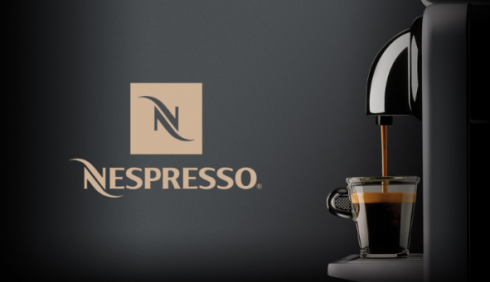
- Profit Model – machines were first available widely across multiple channels and retailers at low prices but pods were only available direct from the club.
- Network – machine manufacturers were engaged to create truly great coffee and growers were engaged to source elite top quality coffee and retailers were engaged to get the machines out there far and wide.
- Structure – Nespresso did not start out as an idea from the inside the mothership Nestle but rather the opposite it was ‘incubated’ across the road from head office in a distinct and different building with a dedicated team set about to disrupt their existing instant coffee business
- Process – Nespresso® licensed a unique technology from the Battelle Institute that made coffee in an instant using an entirely new process (Silberzahneng, 2010).
- Product Performance – we all can remember the first time we had a good Nespresso and could not believe how good the taste was for a homemade coffee.
- Product System – build into the Nespresso club was the unique pods system with multiple types of coffee to suit different palates and desires.
- Service – with Nespresso® club and direct engagement of end consumers through the stores, direct mail, social media, etc. Nespresso® took delivery of a staple to a whole new level.
- Channel – Machines – sold everywhere Pods – direct from Nespresso®.
- Brand – Nespresso did not choose George Clooney as their ambassador – the 2 million friends on Facebook decided he was the ultimate spokesman for their most adored brand.
- Customer Engagement – from online to telephone to direct mail to Nespresso shops and stalls in busy hubs like airports, hotels, etc
Systematically determining what needs to be changed inside and outside your company to create innovation that transcends multiple types of innovation typically involves the following steps according to Keeley (2015).
Understand the beliefs, practices and truths. Start by just listing the unchallenged assumptions about rules, tools, techniques and ingrained habits about the industry. Now think about ways to challenge these orthodoxies.
Starbucks sought to challenge its industry orthodoxies, the first one it faced was the assumption coffee was a commodity for which Americans wouldn’t pay premium prices.
What are your inclinations or predispositions towards doing business in a particular way today?
Imagine life without those assumptions. Consider a customer group that would not behave the way your customers typically behave. Imagine a business that specifically does the opposite to what you are doing right now? What would be some of the likely and unlikely outcomes?
Now think about different ways to rebuild the platform.
Now that assumptions are stated, think of all the ways to challenge them, from a new profit model to different customer-engagement tactics. Most companies stop at trying to do product innovation that marginally alters the offering. The big returns come from multiple approaches, (Keeley, 2015).
Think about Starbucks again. The company flipped its industry’s profit model orthodoxy by creating a premium experience. People may not pay more for coffee, but they certainly do pay more for a different atmosphere in which to drink it.
Start with one of the 10 types of innovation you find most interesting, start thinking of different ways you could innovate under that configuration on your business / category / customer today.
Ask questions. ‘how might we?….’ ‘what if?….’ ‘what’s frustrating you right now? ‘what’s frustrating your customers right now?’ ‘If you had a magic wand, what would you change?….’ Answers to the right questions can lead to an idea, an overview sketch of a new strategy, something to share and build upon.
Once you pick the areas you want to tinker with, how will you explain this new way of doing things to your mother? Where will you concentrate first, and then next? What does the new idea add that is fresh and valuable? What should be prototyped to help customers, users, insiders and partners?
Dermott Dowling is Managing Director @Creatovate, Innovation & International Business consultancy. Creatovate help businesses create, innovate and growth through sustainable innovation processes and spreading their wings outside their home base.
References:
James Janega, (2014), April 2 Larry Keeley, Doblin and the 10 categories of innovation http://bluesky.chicagotribune.com/originals/chi-larry-keeley-doblin-innovation-strategy-bsi-20140401,0,0.story retrieved 12/04/2016.
Larry Keely, Ryan Pikkel, Brian Quinn, Helen Waters (2013) Ten Types of Innovation: The Discipline of Building Breakthroughs, John Wiley & Sons, New Jersey.
Business Today, (2011), Dec 11 Cover Story: A Happy Marriage http://www.businesstoday.in/magazine/cover-story/innovation-toshiba-ups/story/20185.html Business Today online viewed on 12/04/2016.
Charles Fischman (1996) April 30, Whole Foods is all Teams http://www.fastcompany.com/26671/whole-foods-all-teams viewed on 13/04/2016
W.L. Gore http://www.gore.com/en_xx/aboutus/culture/ viewed on 13/04/2016
Helft, Miguel (2002) May, Fast Fashion Forward Business 2.0
Philippe Silberzahneng (2010) March 18, https://philippesilberzahneng.wordpress.com/2010/03/18/nespresso-complexity-innovation-process/ viewed on 15/04/2016






